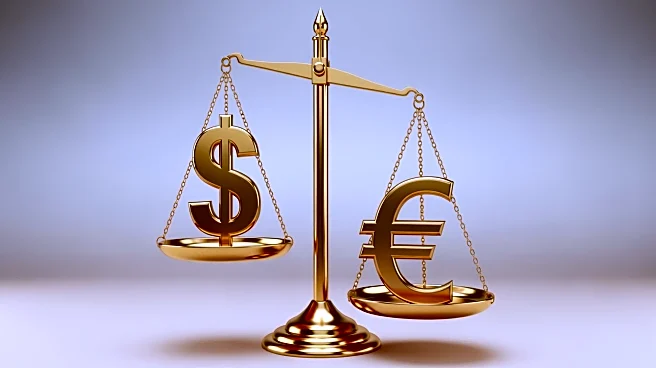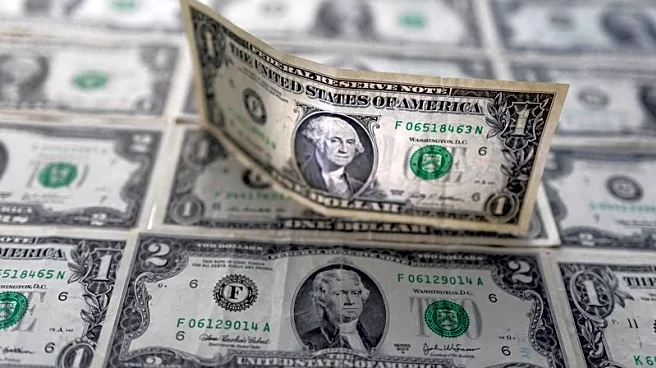What's Happening?
Gold prices have dipped below the $4,000-per-ounce mark as the U.S. dollar remains strong, influenced by the Federal Reserve's divided stance on interest rate cuts. The Federal Reserve recently cut interest rates
for the second time this year, but Chair Jerome Powell indicated that another reduction is 'not a foregone conclusion.' This has led market participants to reassess the likelihood of a rate cut in December, with chances now at 65%, down from over 90% prior to Powell's remarks. The debate among Fed officials continues, with differing views on the economic outlook, especially in light of the federal government shutdown affecting key data releases. Gold, which typically thrives in low-interest-rate environments, has seen reduced demand due to these developments.
Why It's Important?
The Federal Reserve's stance on interest rates is crucial for the U.S. economy, impacting various sectors including commodities like gold. A strong dollar, bolstered by the Fed's cautious approach, can dampen gold demand as it becomes more expensive for foreign buyers. The uncertainty surrounding rate cuts also affects investor sentiment, influencing market dynamics and economic forecasts. The ongoing debate among Fed officials highlights the complexity of balancing inflation risks with labor market concerns, which could have significant implications for monetary policy and economic stability.
What's Next?
Investors are closely monitoring upcoming economic data releases, such as the ADP U.S. employment data and ISM PMIs, for further cues on the Federal Reserve's policy direction. These data points could influence the Fed's decision-making process ahead of the December policy meeting. Additionally, the resolution of the federal government shutdown may provide more clarity on economic indicators, potentially swaying the Fed's stance on interest rates. Market participants will continue to assess the evolving economic landscape and adjust their strategies accordingly.
Beyond the Headlines
The Federal Reserve's policy decisions have broader implications beyond immediate market reactions. The ongoing debate among Fed officials reflects deeper concerns about the U.S. economy's resilience in the face of global uncertainties, such as trade tensions and geopolitical risks. The Fed's cautious approach may signal a shift towards more conservative monetary policy, prioritizing long-term economic stability over short-term gains. This could influence future fiscal policies and shape the economic environment for years to come.












